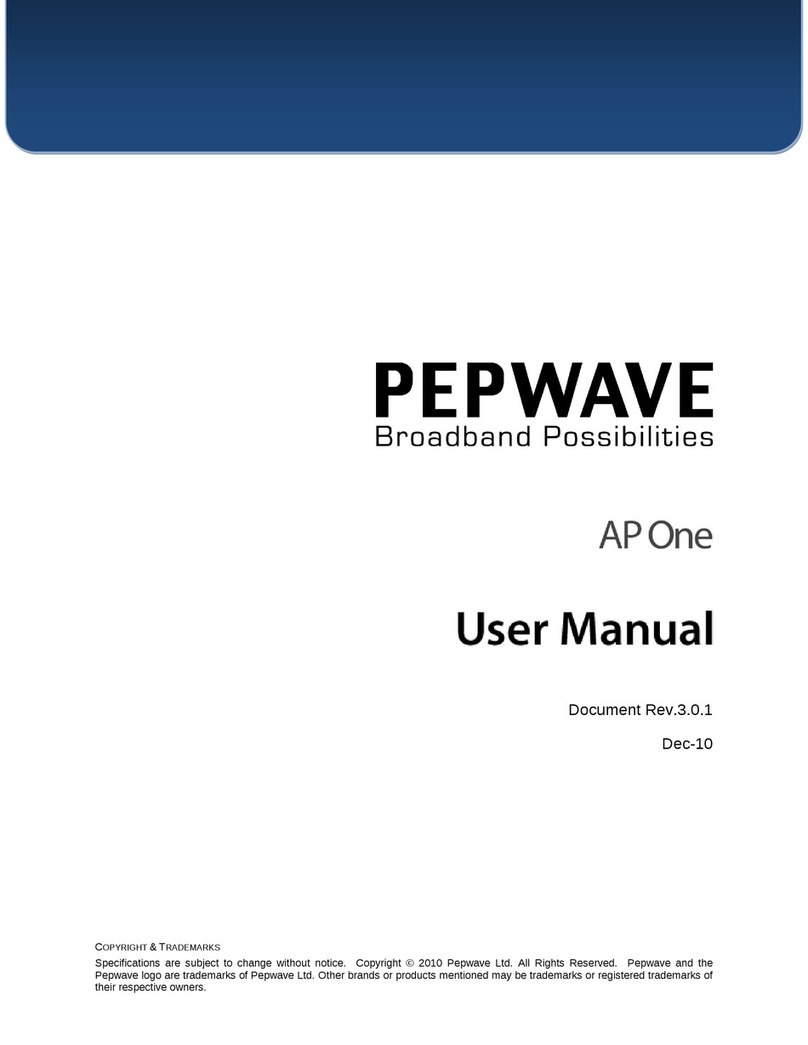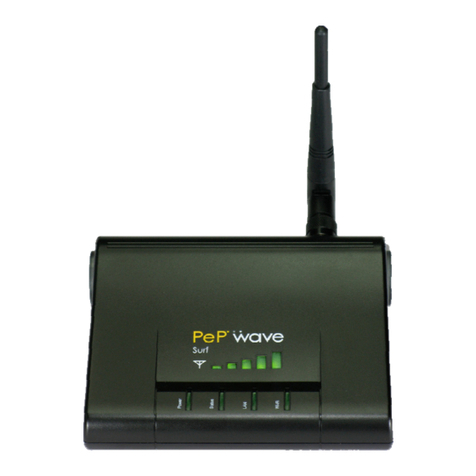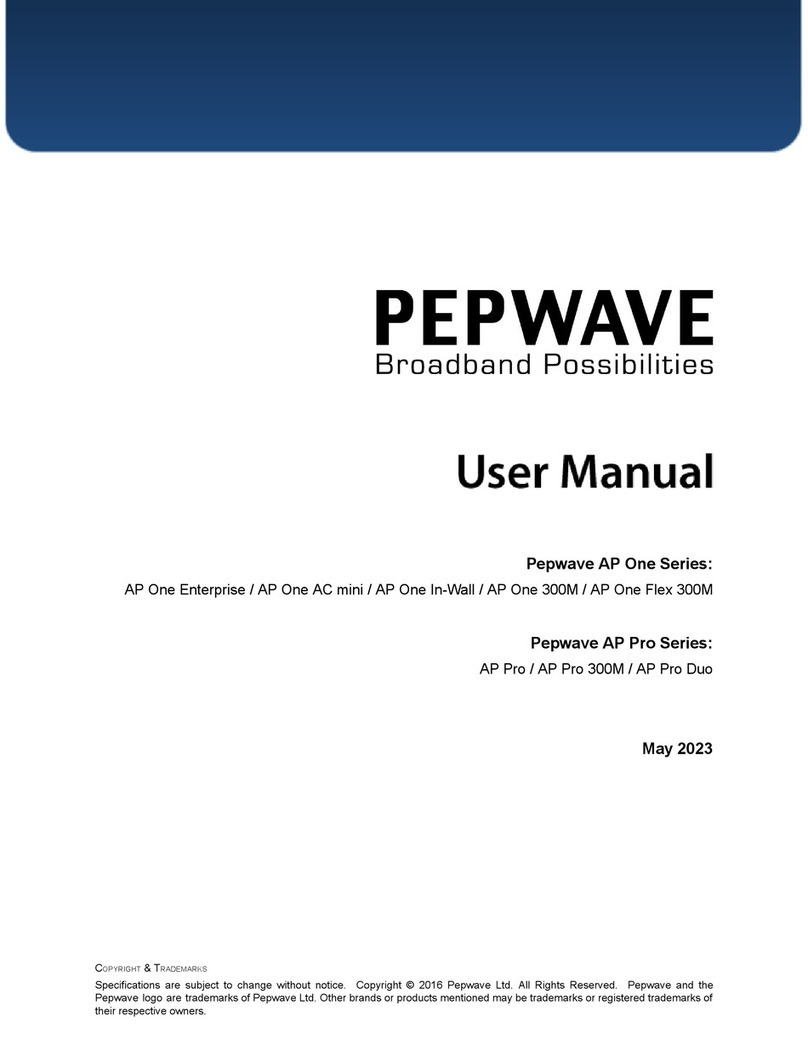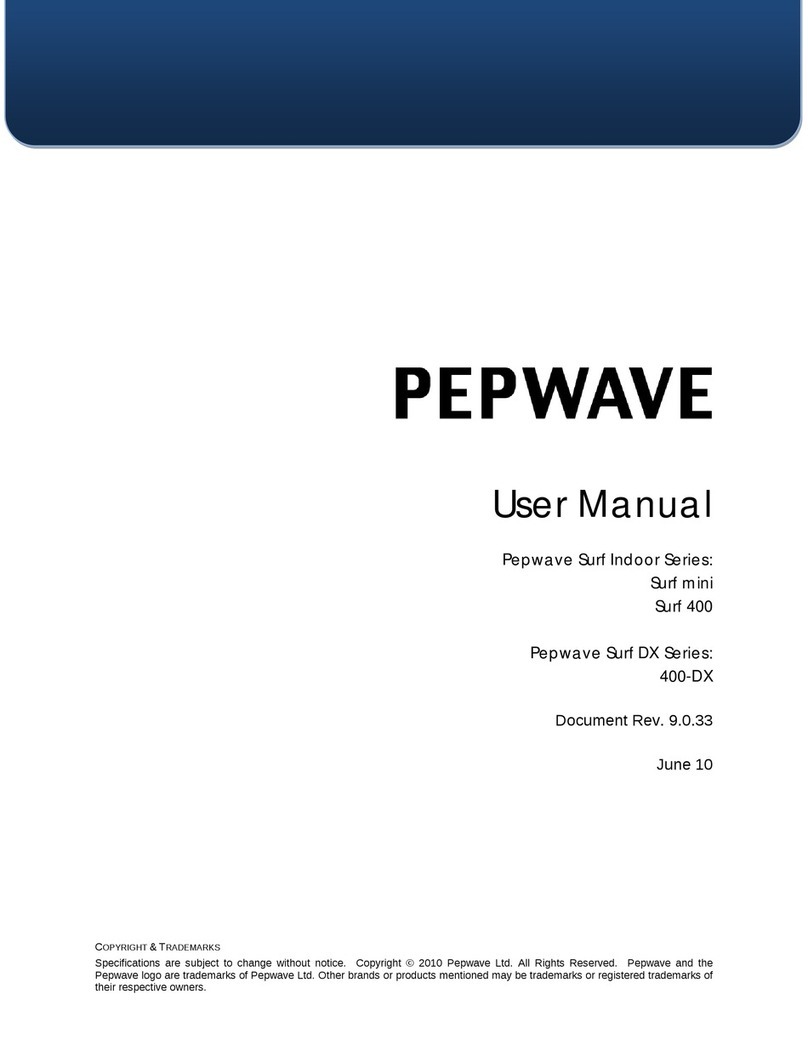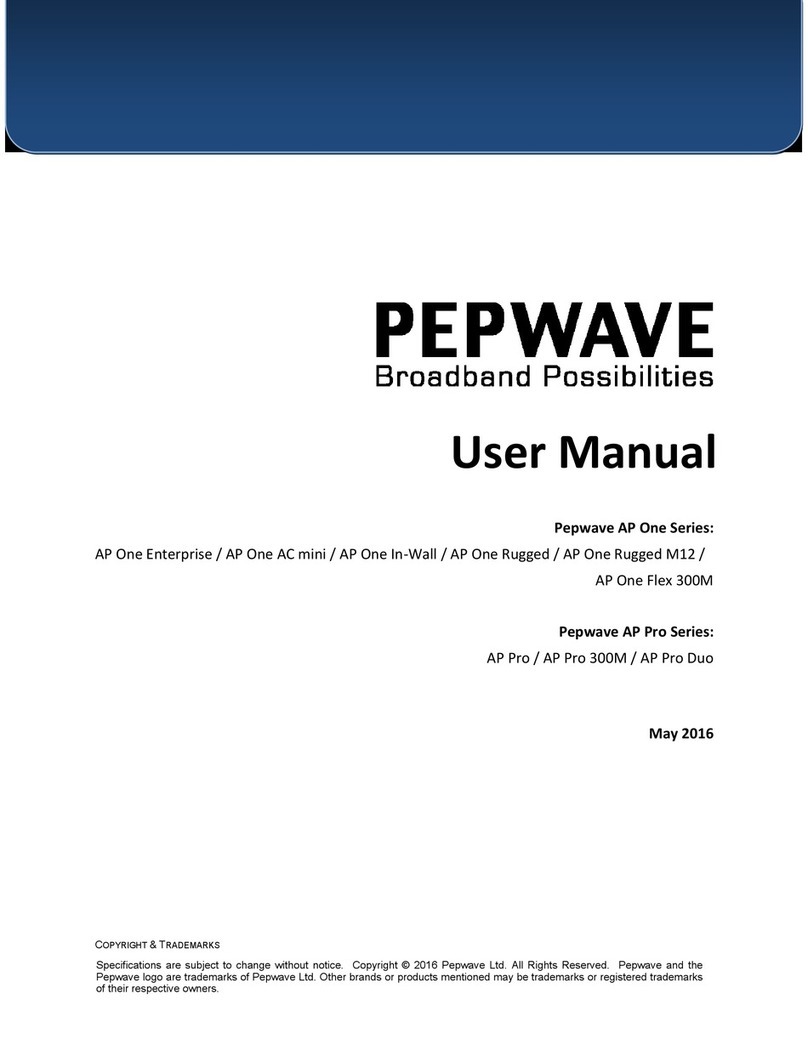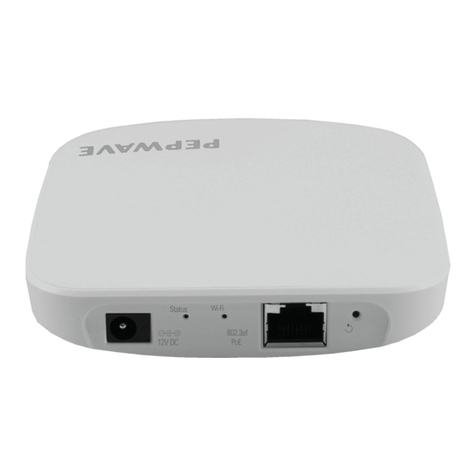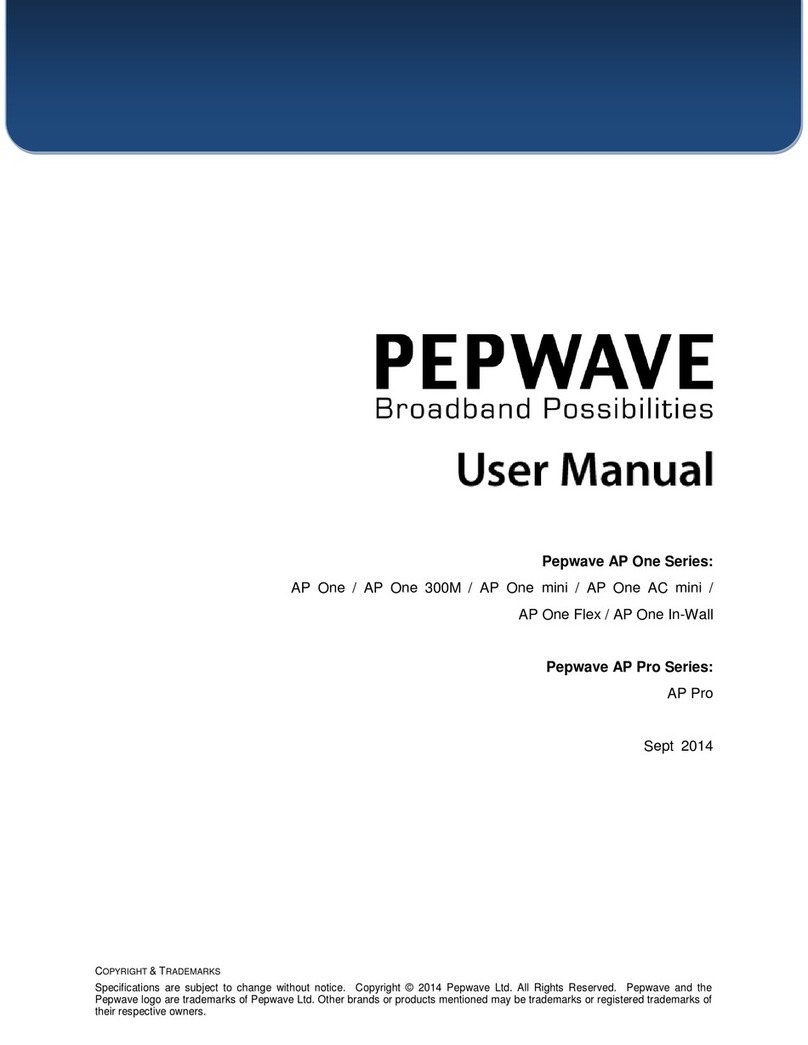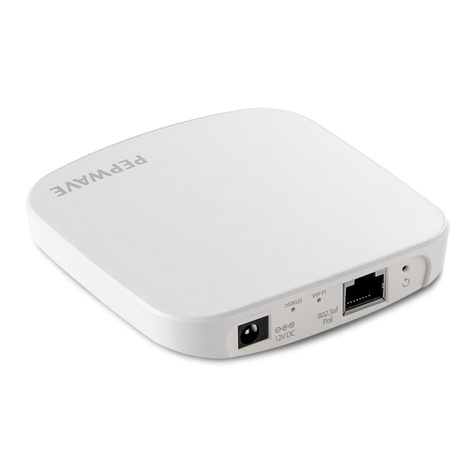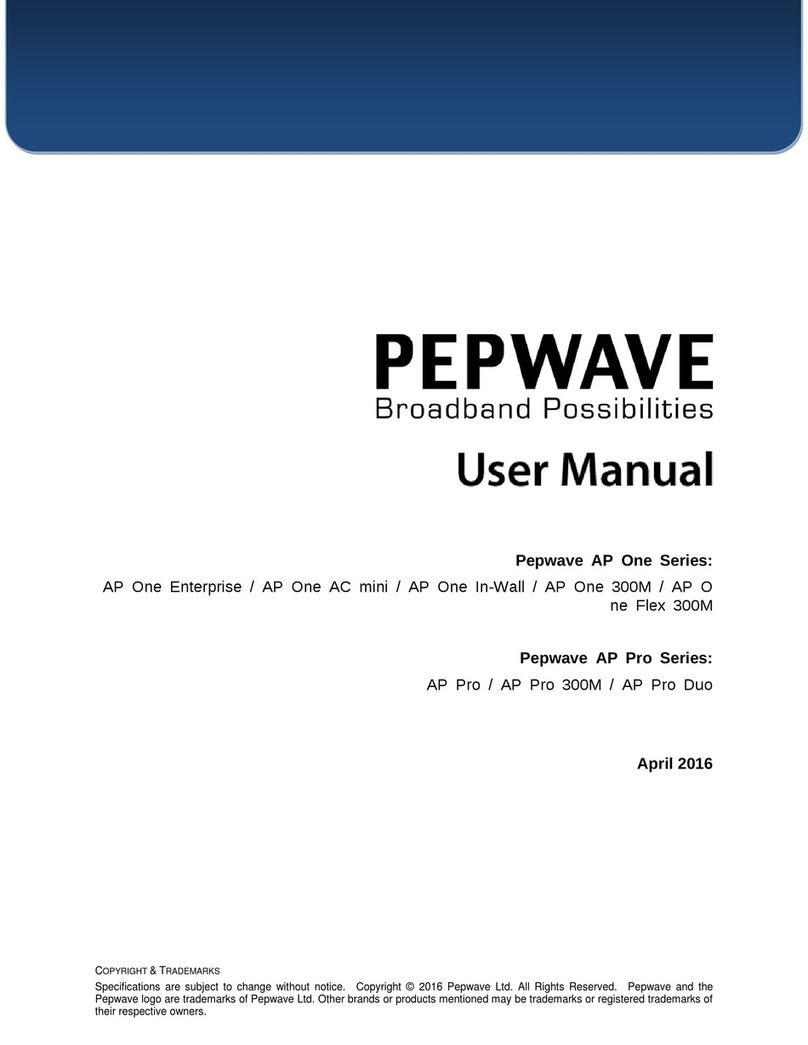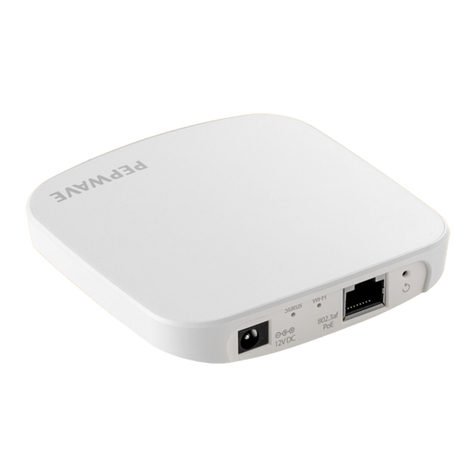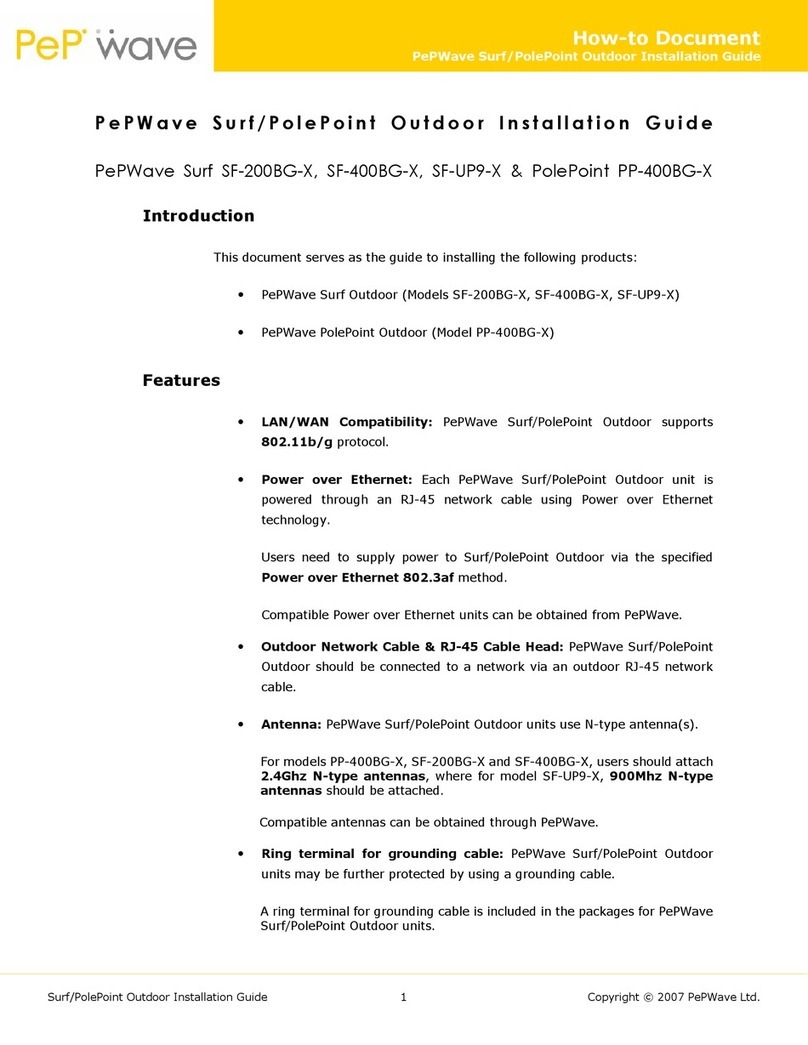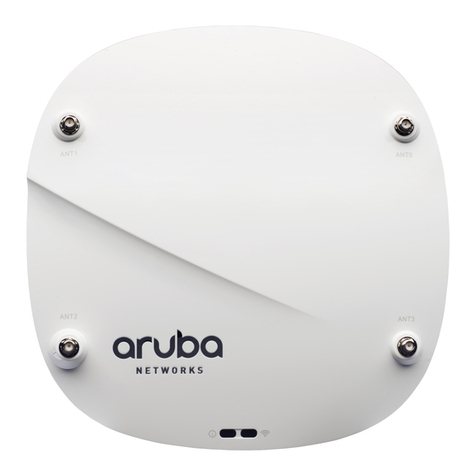
http://www.pepwave.com
2
Copyright ©
5/23/16
Pepwave
Table of Contents
1 Introduction and Scope ......................................................................................... 4
2 Product Features and Benefits ............................................................................. 5
3 Package Contents .................................................................................................. 5
3.1 AP One Enterprise .............................................................................................. 6
3.2 AP One AC mini .................................................................................................. 6
3.3 AP One In-Wall .................................................................................................... 6
3.4 AP One Rugged .................................................................................................. 6
3.5 AP One Flex 300M .............................................................................................. 6
3.6 AP Pro / AP Pro 300M / AP Pro Duo .................................................................. 6
4 Hardware Overview ................................................................................................ 6
4.1 AP One Enterprise .............................................................................................. 7
4.2 AP One AC mini .................................................................................................. 8
4.3 AP One In-Wall .................................................................................................... 9
4.4 AP One Rugged ................................................................................................ 10
4.5 AP One Flex 300M ............................................................................................ 11
4.6 AP Pro / AP Pro 300M / AP Pro Duo ................................................................ 12
5 Installation ............................................................................................................ 13
5.1 Installation Procedures .................................................................................... 14
6 Using the Dashboard ........................................................................................... 15
6.1 General .............................................................................................................. 15
6.2 AP ...................................................................................................................... 17
7 Configuration ........................................................................................................ 18
7.1 System ............................................................................................................... 19
7.1.1 Admin Security .............................................................................................. 19
7.1.2 Firmware ........................................................................................................ 20
7.1.3 Time ............................................................................................................... 21
7.1.4 Event Log ....................................................................................................... 21
7.1.5 SNMP ............................................................................................................. 22
7.1.6 Controller ....................................................................................................... 25
7.1.7 Configuration ................................................................................................ 25
7.1.8 Reboot............................................................................................................ 26


